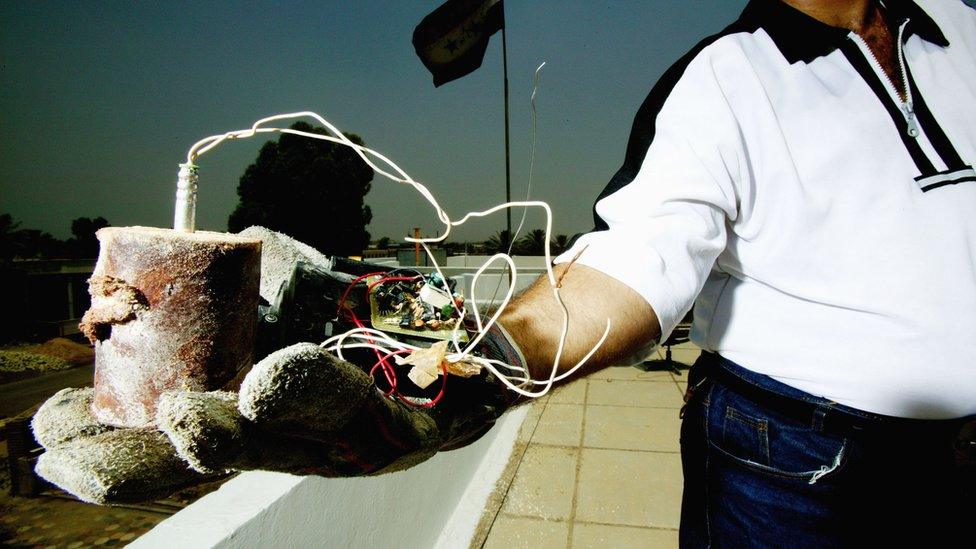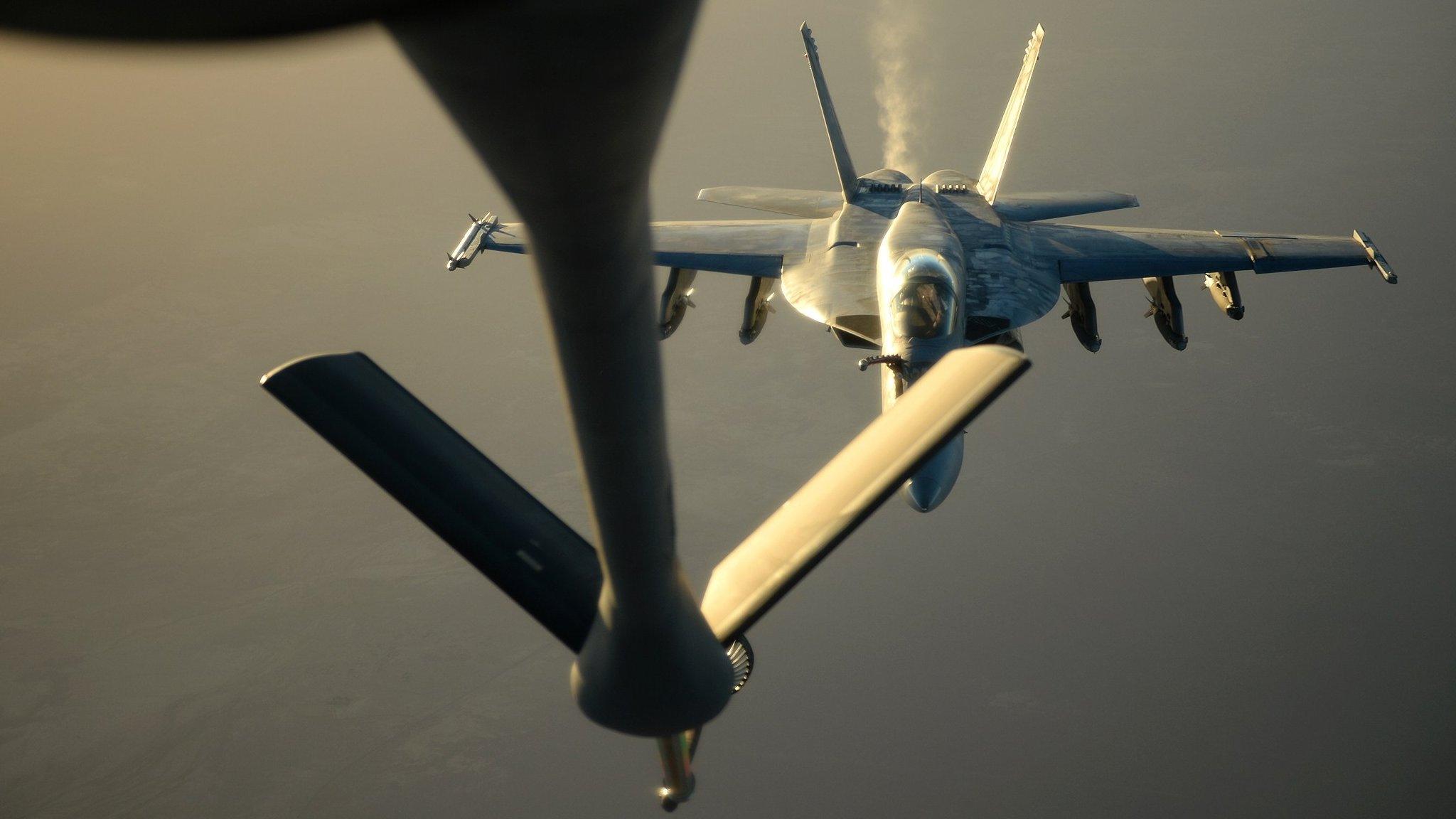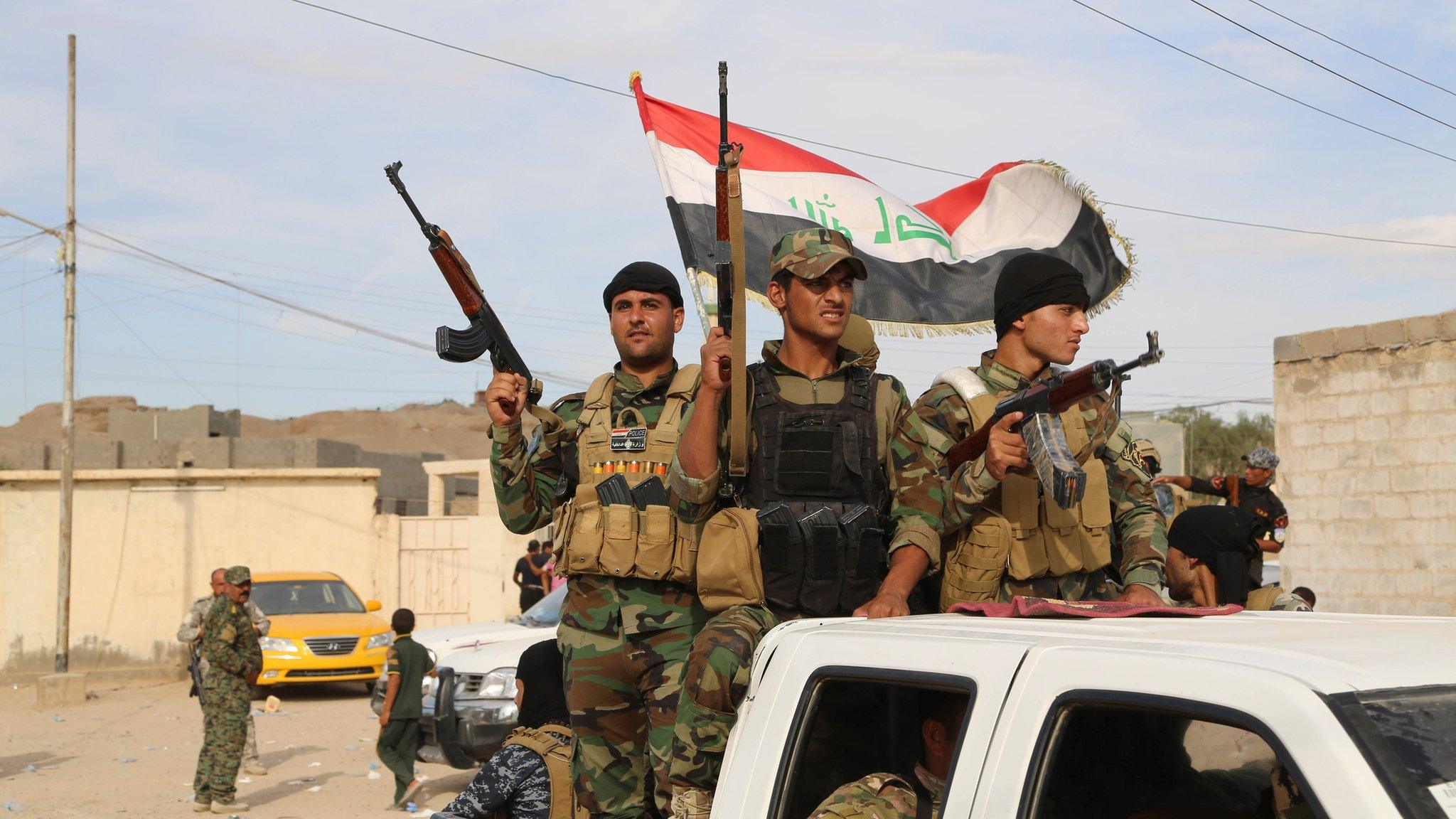Ramadi assault: How a small change in tactics helped Iraqi forces
- Published

The Iraqi army was trained for a different fight
A switch in tactics has provided the Iraqi Security Forces (ISF) with some victories in their battle against the so-called Islamic State (IS), notably in Ramadi, says the US military.
The change came in the late summer.
Lieutenant General Sean MacFarland took over the US-led coalition against IS known as Operation Inherent Resolve in September.
Upon assuming his new post, the general began studying what worked and what had not worked in the fight against IS up to that point.
Recognising that IS was a different enemy from the one faced during the last decade, he ordered an adjustment to the training and equipment that was being provided to the Iraqis.
As a result, in the past few weeks, the ISF has closed in on the city of Ramadi - which fell in an embarrassing defeat in May.
Colonel Steve Warren, a Baghdad-based spokesman for the US Department of Defense, said in a BBC interview that the success is due in large part to conventional warfare tactics recently employed by the ISF, not the counter-insurgency style tactics they were trained by the Americans to use for several years.
The ISF, up to that point, was largely a product of training that followed the US invasion of Iraq in 2003.

For years, the main threat in Iraq was insurgency
Facing the threat of guerrilla fighters for most of the eight-year conflict, the US and its allies fought a counter-insurgency war and trained the Iraqis to do the same.
"Guerrilla tactics, insurgent tactics - it's all about hit and run, it's all about avoiding a major fight," Colonel Warren said. "The insurgents' mission is to convince the people that you're up against to go away and leave you alone."
But IS's strategy is different - working to seize and hold territory in an attempt to establish a state.
"You can't do that through insurgency, you have to do that through conventional warfare," Mr Warren said.
As an example, the colonel pointed to the strategic city of Ramadi, which has been in the hands of IS but Iraqi forces have this week advanced into the city centre.
There is one main road into Ramadi.
To protect the city, IS have littered the road and surrounding area with improvised explosive devices (IEDs) in way that makes a sort of makeshift minefield. They then aimed machine guns and mortars at the field of explosives, to deter bomb disposal activities.
While IEDs have been used for years in Iraq, the way that IS is using them today is different.

While IEDs have been used in Iraq for years, the way in which they are used is changing
During the mid-2000s, insurgents would use a single IED hidden inconspicuously to, in the words of Colonel Warren, "instil terror, crack morale, kill and wound a group in one vehicle".
But now they are being used en masse and in the open as a deterrent, not as a one-off ambush to inflict fear.
"The army that we trained was a counter-insurgency army," the colonel said, which included training for dealing with single, hidden IEDs, placed in advance by combatants that had long left the scene.
When the improvised bombs were spotted, bomb disposal robots and experts could be deployed to clear the route.
But the clusters of IEDs being used today, along with the machine guns and mortars protecting the explosive field, render these counter-insurgency tactics largely ineffective.
This, Colonel Warren says, is "exactly how you establish a defensive position".
To counter the minefield, the coalition began working with the ISF to introduce traditional, conventional tactics and equip them with systems that were previously not needed.

APOBS, or an "explosive rope attached to a rocket", like one seen here being used in Afghanistan, have been successful against IEDs in Iraq
The colonel pointed to one manoeuvre called an in-stride breach, which involves using an "explosive rope attached to a rocket" to blast a lane through the explosive field, allowing forces to push through rapidly.
The pseudo-minefield is just one way that IS is "using conventional military tactics in a way that does not perfectly align with the way we had trained the Iraqi army", he said.
For more than a year, the US and coalition forces have been carrying out air strikes against IS, which controls a large part of northern Syria and parts of neighbouring Iraq.
And in recent months, the President Barack Obama has found himself regularly defending his anti-IS strategy - sometimes from criticism by those in his own party.
Critics allege that it has cost large amounts of money with little success.
The small change that has helped in the battle for Ramadi does not constitute a wholesale shift in the mission's strategy, and officials regularly say tactics are constantly reviewed and adjusted.
But while it is too early to tell if these tactics will prove effective in the long term, the ISF does seem to be enjoying success with them in recent weeks.
Colonel Steve Warren was speaking to the BBC at the end of November
- Published28 October 2015

- Published14 October 2015
